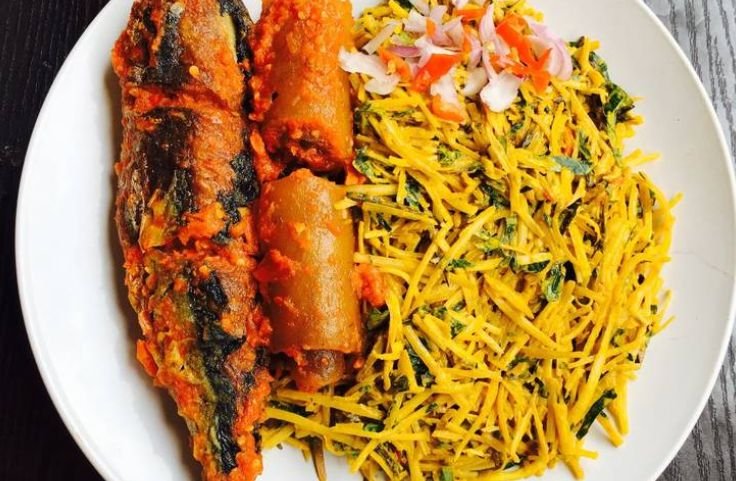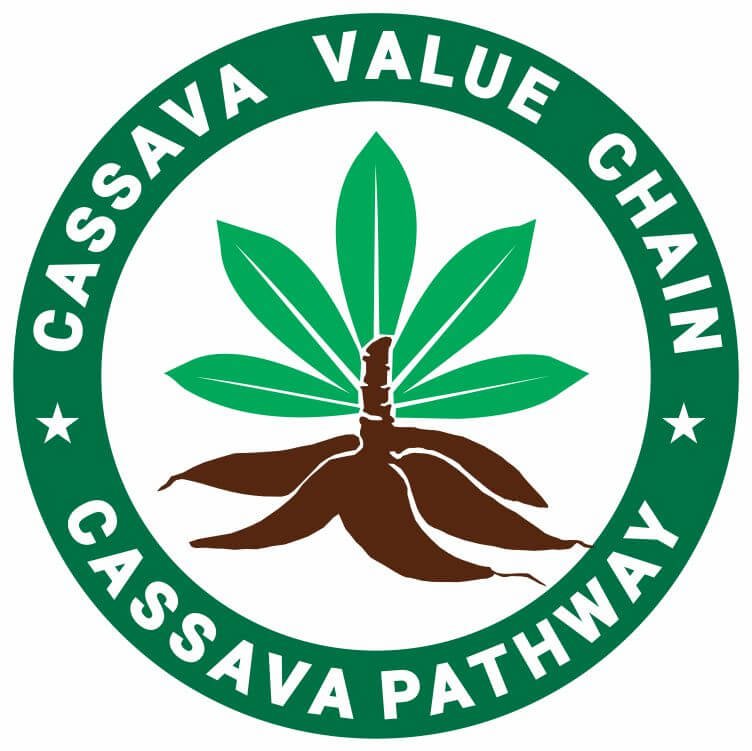Is cassava paleo? Find out how this starchy root fits into the paleo lifestyle, which forms are compliant, and what health-conscious eaters should watch out for.
You’re probably trying to figure out if cassava fits into your paleo lifestyle, or if it’s better left off your plate.
With so many foods labeled as natural or healthy, it can be tricky to know which ones align with the principles you follow.
Cassava and its byproducts show up in everything from grain-free flours to paleo-inspired snacks.
But before adding it to your shopping list, you need to ask the right questions.
Does it align with your goals? How does it affect your energy levels and digestion?
And what about its carb content or how it’s processed? If cassava is already in your kitchen or just on your radar, it’s worth taking a closer look.
This guide will walk you through what matters, so you can make confident, informed choices that support how you want to eat and live.
Recommended: Delicious Cassava Paleo Recipes
Table of Contents
- Paleo Diet Basics
- Is Cassava Paleo-Compliant?
- Where Cassava Fits in a Paleo Framework
- The Gray Areas: Paleo vs. Processed Cassava Products
- Nutritional Considerations
- Who Should Be Cautious About Cassava on Paleo
- Paleo-Friendly Ways to Use Cassava
- Frequently Asked Questions about Cassava and Paleo
- Final Verdict: Is Cassava Paleo?
Paleo Diet Basics
The Paleo diet promotes eating whole, unprocessed foods that resemble what early humans consumed during the Paleolithic era.
It encourages lean meats, fish, vegetables, fruits, nuts, and seeds, which are believed to support better health by avoiding the processed ingredients common in modern diets.
Grains, legumes, dairy, and refined foods are excluded due to concerns over digestion and nutrient absorption.
The diet also includes starchy vegetables like sweet potatoes and squash in moderation, offering energy sources for active individuals.
This approach aims to align food choices with human evolution, helping reduce inflammation, improve digestion, and stabilize energy levels.
By focusing on natural foods and eliminating modern processed items, Paleo followers seek better physical and mental well-being.
The diet isn’t about restriction but about reconnecting with food that supports long-term health.
It serves as a mindful framework for people who want to eat with purpose and return to nutrient-dense basics.
Related: Cassava is not known in America: Why?
Is Cassava Paleo-Compliant?

Cassava, also called yuca or manioc, is widely accepted in the Paleo diet due to its classification as a tuber rather than a grain or legume.
Unlike grains, cassava is naturally gluten-free and does not contain antinutrients typically excluded in Paleo eating.
It offers a whole, unprocessed food option rich in carbohydrates, making it a useful energy source for active individuals.
Cassava is a traditional staple in many tropical regions and has a long history of human consumption.
It can be boiled, baked, or ground into flour for Paleo-friendly recipes.
However, it must be thoroughly cooked to eliminate natural cyanogenic compounds.
Overall, cassava aligns with Paleo principles and can be a valuable addition to a grain-free lifestyle.
Recommended Posts
10 Amazing Health Benefits of Cassava
Cassava for Diabetics: The Pros and Cons
Does Cassava Have Resistant Starch?
Does Cassava and its Products Have Gluten?
What Doctors Say about Cassava and Pregnancy
Clearing the Confusion of Cassava and Weight Loss
Where Cassava Fits in a Paleo Framework
Cassava, or yuca, fits well within the Paleo diet as a starchy vegetable that offers energy-rich carbohydrates.
While it’s less nutrient-dense than options like sweet potatoes, its high starch content makes it ideal for active individuals needing to refuel after exercise.
Cassava also adds texture and flavor diversity to meals, which can help prevent dietary monotony.
When properly cooked, cassava contains resistant starch, a prebiotic that supports gut health by feeding beneficial bacteria.
However, it’s important to remove toxins through thorough cooking, as raw cassava contains cyanogenic compounds.
Though it may not match the nutrient profile of other Paleo staples, cassava’s energy-boosting potential and cooking flexibility make it a useful option for those following a Paleo lifestyle.
The Gray Areas: Paleo vs. Processed Cassava Products
Cassava might sound like a great fit for your Paleo lifestyle, but not every form of it belongs on your plate.
Let’s break down the differences.
Cassava Flour: A Grain-Free Option with Conditions
If you’re using cassava flour, you’re likely drawn to its smooth texture and how well it mimics wheat flour.
It’s made from the whole root and is naturally gluten-free, which ticks key Paleo boxes.
Still, not all cassava flour is created equal. Pay attention to how it’s processed.
Some brands may use techniques that strip away nutrients.
Look for products that stay close to the root’s natural form and avoid additives.
Tapioca Starch: Pure Carbs with Less Fiber
You might spot tapioca in Paleo recipes, but it’s worth pausing before you dive in.
Unlike cassava flour, tapioca starch is extracted only from the starchy part of the root.
It’s low in fiber and protein, which means it delivers energy without much else.
It can work in moderation, but relying on it too much might leave you with blood sugar spikes and little nutritional payoff.
Packaged Cassava Snacks: Paleo in Disguise?
Just because a snack says “cassava” on the label doesn’t make it Paleo.
Many processed cassava chips or crackers are loaded with oils, preservatives, and other ingredients that don’t belong in a whole-food diet.
Before tossing them in your cart, check the label. If it reads more like a chemistry experiment than a root-based recipe, it’s better left on the shelf.
Whole cassava or minimally processed flour is always the better pick.
Nutritional Considerations
Cassava is known for its high carbohydrate content, with about 38 grams per 100-gram serving, making it a strong energy source.
While this suits active individuals, it may need to be balanced within lower-carb diets like Paleo.
Cassava is low in protein and fat, so pairing it with nutrient-dense foods like fish or avocados helps create a more balanced meal.
One benefit is its low allergen potential, making it a safer choice for those avoiding grains.
However, cassava must be thoroughly cooked to remove natural compounds that can produce cyanide if left raw.
When prepared properly, cassava can be a useful addition to your Paleo meals, offering variety and energy, as long as it’s combined wisely with protein and healthy fats to support your overall nutrition goals.
Who Should Be Cautious About Cassava on Paleo
Cassava can work for many people on a Paleo diet, but for some, it requires more thought.
Here’s what to keep in mind before adding it to your meals.
Low-Carb or Ketogenic Paleo: Watch the Starch
If you’re keeping your carbs low to stay in ketosis, cassava may not help you hit your goals.
With its high starch content, even small portions can push your daily carb limit.
That can stall fat burning and kick you out of ketosis.
If you’re serious about staying low-carb, you may want to skip cassava or save it for refeed days when you’re not as focused on staying in a strict metabolic state.
Managing Blood Sugar: Pay Attention to Spikes
If you’re working to manage insulin resistance or blood sugar levels, cassava could make things tricky.
Its high glycemic index can lead to fast spikes in blood glucose.
That might undo the progress you’re making with diet and exercise.
If you still want to include cassava, stick to small portions and pair it with protein or healthy fat to help slow the glucose response.
Unsafe Preparation: Don’t Cut Corners
If you don’t have access to well-processed cassava, think twice.
Raw or poorly prepared cassava can contain natural toxins that your body can’t handle.
You need to soak, boil, or ferment it properly to make it safe.
If you’re not sure how it’s processed, or you’re buying it from an unknown source, it’s better to choose a safer starchy vegetable.
Don’t guess when it comes to food safety.
Paleo-Friendly Ways to Use Cassava
Cassava gives you a grain-free option that works with your Paleo lifestyle. It’s filling, naturally gluten-free, and can fit into your meals in simple and satisfying ways.
Cassava Tortillas: Soft Wraps You Can Trust
You can make cassava tortillas at home with just boiled cassava and a bit of effort. Peel, boil, and blend the root until smooth.
Then form the dough into rounds and cook them on a hot skillet.
The result is a soft, flexible tortilla that works well with meats, roasted vegetables, or eggs.
It’s a good way to enjoy wraps without using wheat or corn.
Cassava Flatbread: A Quick Base for Spreads
Cassava flour makes a simple dough with just water and salt. Roll it out and bake until crisp around the edges.
This flatbread works great with guacamole, nut butter, or even leftover grilled meat.
It holds up well and gives you a reliable option when you want something to dip or layer with flavor, all without stepping outside your Paleo goals.
Cassava Fries: A Crisp and Comforting Side
Cut cassava into fries, season with herbs or spices, and bake or pan-fry until golden.
They give you that satisfying crunch you miss from regular fries, without using potatoes.
Pair them with grilled protein or enjoy them with avocado slices or a homemade coconut dip.
They make a filling and fun side dish that supports your energy without relying on grains.
Frequently Asked Questions about Cassava and Paleo
Is cassava allowed on the Paleo diet?
Yes, cassava is Paleo-friendly when eaten whole or as minimally processed flour. It’s a starchy tuber and naturally free of gluten, grains, and legumes.
Is cassava flour better than tapioca for Paleo?
Cassava flour uses the whole root and keeps more fiber, making it a better choice for Paleo than highly refined tapioca starch.
Can you eat cassava on a low-carb Paleo diet?
Cassava is high in carbs. If you’re doing low-carb or keto Paleo, use cassava sparingly or skip it to stay in ketosis.
What are the risks of eating cassava on Paleo?
Improperly cooked cassava contains toxins. Always prepare it thoroughly, avoid processed snacks with additives, and stick to clean sources for safety.
Final Verdict: Is Cassava Paleo?
Cassava can fit into a Paleo diet when you stick to its whole or minimally processed forms.
The root itself has been eaten for generations and aligns well with Paleo principles due to its natural state and lack of additives.
Cassava flour also works as a grain-free option for baking and cooking, keeping flavor and texture without breaking Paleo rules.
But not all cassava products are equal. Highly processed forms like tapioca and packaged snacks can lose nutrients and include non-Paleo ingredients.
To stay on track, focus on quality and preparation. Choose whole cassava or clean cassava flour, avoid heavily processed items, and pair it with nutrient-dense foods.
That way, you get the benefits of cassava without compromising your goals.
References

Chimeremeze Emeh is a writer and researcher passionate about Africa’s most transformative root crop—cassava. Through his work at cassavavaluechain.com, he explores the entire cassava industry, from cultivation and processing to its diverse applications in food, health, and industrial use.
He also writes for palmoilpalm.com, where he shares his extensive experience and deep-rooted knowledge of palm oil, covering red palm oil, palm kernel oil, and refined products. His work there reflects his lifelong connection to agriculture and his commitment to promoting sustainable value chains in Africa.
Driven by curiosity and purpose, Chimeremeze aims to shed light on how cassava continues to empower communities, strengthen food systems, and link traditional farming wisdom with modern innovation.

